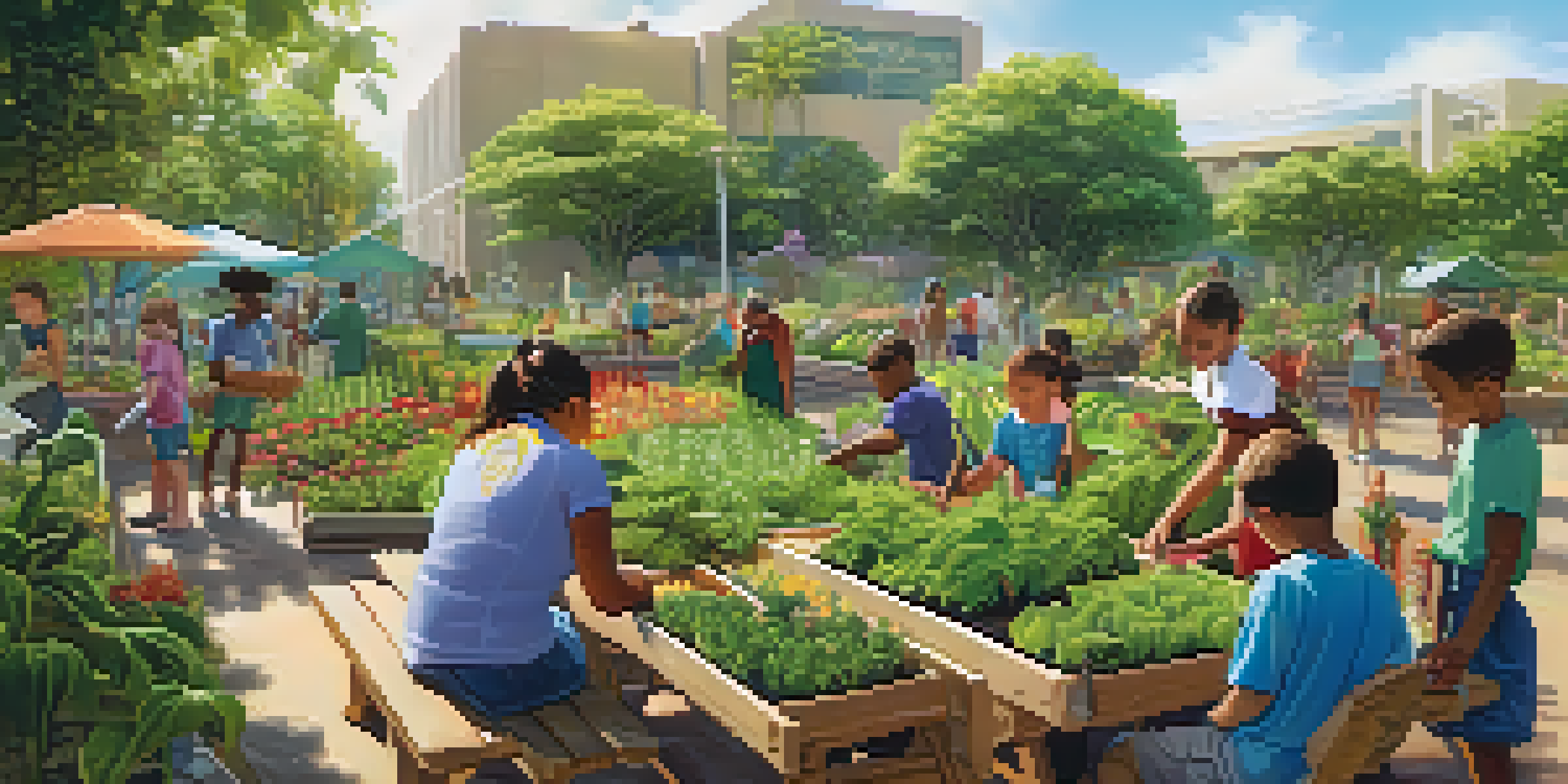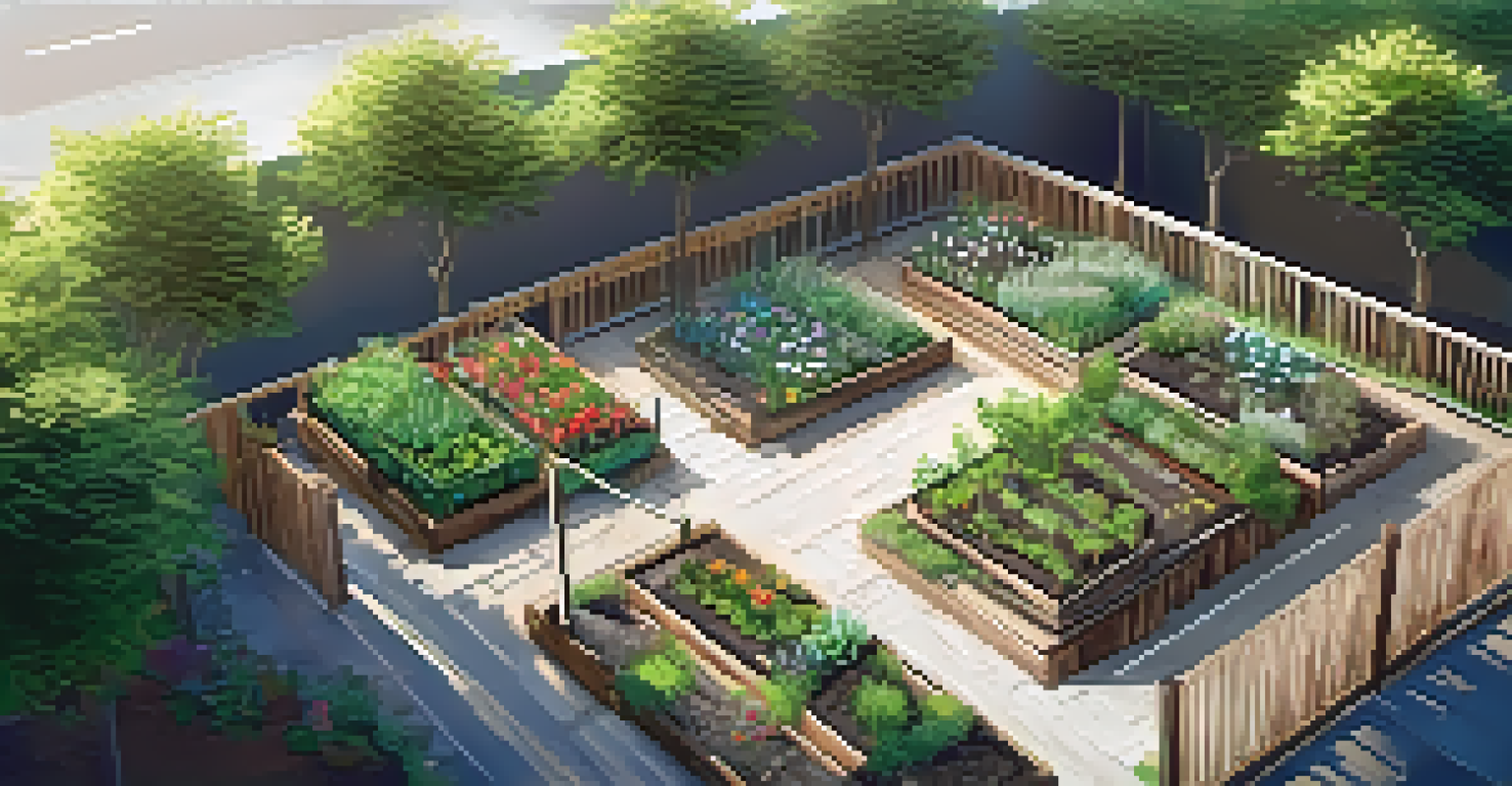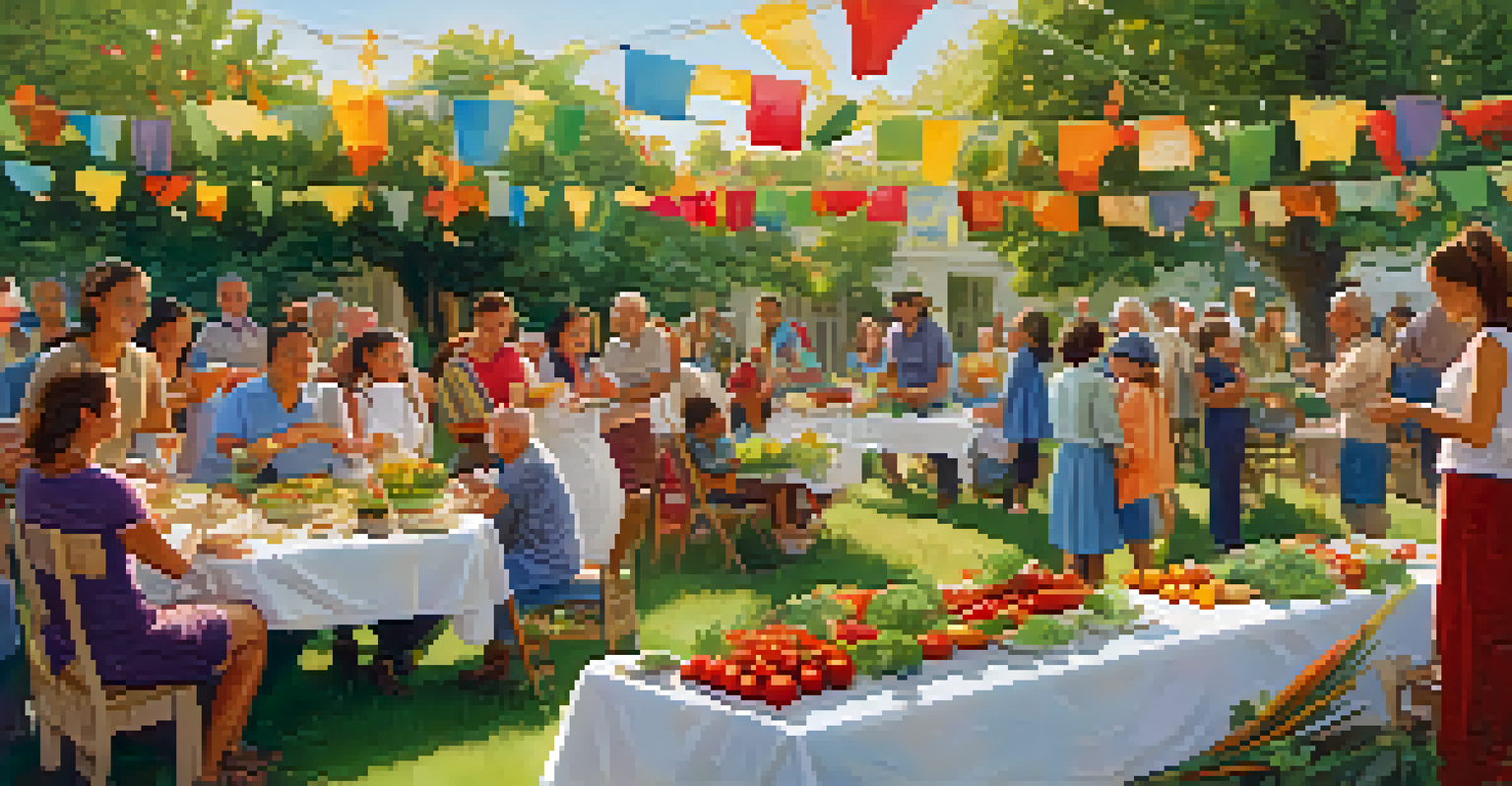How to Start a Community Garden in Honolulu, Hawaii

Understanding the Benefits of Community Gardens
Community gardens offer a plethora of benefits that extend beyond just growing food. They promote sustainable practices, enhance local biodiversity, and create a sense of belonging among residents. In a bustling city like Honolulu, where green space is precious, these gardens serve as vital havens for both people and wildlife.
Community gardens are a way to get to know your neighbors, work together, and celebrate the bounty of nature.
Additionally, community gardens provide educational opportunities for all ages. Workshops on planting, composting, and organic gardening can help foster a stronger connection to the environment. This hands-on learning experience not only enriches knowledge but also encourages healthier eating habits within the community.
Lastly, these gardens can significantly boost community spirit. By working together, neighbors cultivate trust and friendships, turning often isolated individuals into a cohesive group. In a place like Honolulu, where the Aloha spirit thrives, community gardens can strengthen those bonds even further.
Finding the Perfect Location for Your Garden
Choosing the right location for your community garden is crucial for its success. Look for spaces that receive ample sunlight and have good soil drainage, as these factors are key to healthy plant growth. Consider areas near schools, community centers, or even vacant lots that could benefit from a little green.

It’s also essential to assess the accessibility of the site. A garden should be easily reachable for all community members, including those with disabilities. In Honolulu, think about public transportation options and parking availability to ensure everyone can participate.
Community Gardens Foster Connections
These gardens not only provide fresh produce but also create a sense of belonging and community spirit among residents.
Moreover, be mindful of any zoning laws or community guidelines that might affect your garden. Research local regulations to avoid any legal hiccups down the line. A little due diligence now can save a lot of headaches later.
Gathering Support and Building a Team
Starting a community garden is not a solo endeavor; it requires a team. Begin by reaching out to neighbors, local organizations, and gardening enthusiasts to gauge interest. Hosting an initial meeting can help you brainstorm ideas and develop a shared vision for the garden.
The love of gardening is a seed once sown that never dies.
Once you have a group of interested individuals, assign roles based on skills and interests. Some might excel in gardening, while others could manage outreach or fundraising efforts. A diverse team can bring different perspectives and talents, enriching the overall project.
Don’t forget to engage with local government and community leaders. Their support can provide valuable resources and lend credibility to your project. Building these relationships can also open doors for funding opportunities and partnerships.
Creating a Garden Plan and Design
With your team assembled, it’s time to dive into planning and design. Start by deciding what types of plants you want to grow, keeping in mind the local climate and soil conditions. Incorporating a mix of vegetables, herbs, and flowers can enhance biodiversity and yield a variety of harvests.
Next, consider the layout of the garden. Will you use raised beds, in-ground planting, or a combination of both? Think about accessibility and aesthetics; wide paths can make it easier for everyone to navigate while adding to the garden's charm.
Successful Gardens Require Teamwork
Building a diverse team and engaging local leaders is essential for gathering support and resources for your community garden.
Lastly, plan for communal areas where members can gather, share tips, or simply relax. A picnic table or seating area creates a welcoming atmosphere and encourages social interaction, making the garden a true community hub.
Fundraising and Securing Resources
Like any project, funding is a key component of establishing a community garden. Start by estimating your budget, considering costs for soil, seeds, tools, and other materials. Having a clear financial plan will help guide your fundraising efforts.
Explore various fundraising avenues, from local grants to crowdfunding platforms. Many organizations support community gardening initiatives, so don’t hesitate to apply for grants or seek donations from local businesses. Hosting events can also be a fun way to raise money while bringing the community together.
In addition to financial resources, consider seeking in-kind donations, such as tools or plants. Local nurseries and hardware stores might be willing to help if approached thoughtfully. Building relationships with local businesses can also foster a sense of community support.
Organizing Garden Maintenance and Responsibilities
Once the garden is up and running, it's important to establish clear maintenance responsibilities. Create a schedule that outlines who will tend to the garden each week. Regular care, such as watering, weeding, and harvesting, is essential for keeping the plants healthy and thriving.
Encouraging participation from all members is vital to maintaining enthusiasm and accountability. Consider organizing regular workdays where everyone can come together to tend the garden. These events not only help with maintenance but also strengthen community bonds.
Celebrating Harvests Strengthens Bonds
Hosting events to celebrate garden harvests fosters pride and strengthens the community's connection to both each other and the environment.
Don’t forget about seasonal maintenance tasks, like preparing the garden for winter or rotating crops. By involving everyone in these activities, you’ll ensure that your garden remains a vibrant, productive space throughout the year.
Celebrating Harvests and Building Community
Celebrating your garden’s harvest is a wonderful way to foster community spirit. Hosting seasonal potlucks where everyone can share dishes made from the garden’s bounty creates a sense of pride and accomplishment. It’s a great opportunity to showcase the hard work everyone has put in.
You can also organize workshops or events that teach others about gardening and sustainable practices. Invite local experts to share their knowledge and inspire others in the community. This not only promotes gardening but also strengthens the community’s connection to the environment.

Finally, consider sharing your produce with local food banks or shelters. It’s a compassionate way to give back to the community and ensure that fresh, healthy food is accessible to everyone. By sharing your harvest, you’ll not only nourish your neighbors but also create a culture of generosity.